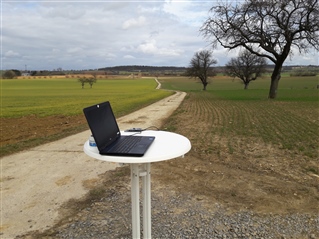Hello Guys,
I have some measurements for the determination of the maximum range and the energy consumption. The experiment is based on the ATT_MTU throughput example, nRF5_SDK_14.2.0_17b948a and s140_nrf52840_6.0.0-6.alpha_API. For the experiment I have set the following parameters: .ATT_MTU 247 .connection interval 7.5 ms .DLE ON 4 dBm transmit power for 1 M PHY and 2 M PHY and 8 dBm for Coded PHY. In the attachment you can see the pictures for the Experiment.
The measurement and the results are in the attached PDF.

I have shown the measurement results in the diagrams and cannot follow the results so well. In Long Range mode with 8 dBm I got almost the same distance as with uncoded 1 M Phy and 4 dBm transmission powers.
In the Softdevice it is written that the PHY and the PHY and the PHY options (2 Mbps and 125 kbps, known as Coded S = 8). It does not support connection with other PHY configurations. The link must be established first in 1 Mbps PHY and then the PHY can be changed using the above mentioned SV call. The following table shows the supported PHY combinations of this version of the SoftDevice when using LE Coded PHY and 2 Mbps. Encrypted links are not supported in all combinations as indicated in the table. Where encryption is not supported, the link must be established with 1 Mbps PHY and not encrypted before changing PHY. >> 1) is that the reason why the connection Long Range Mode is not clear? 2) The diagrams also clearly show that performance in long-range mode drops dramatically over time, while the uncoded 1 PHY remains approximately constant up to the maximum range. Is that condition because of the environment or is there any other reason? 3) How is the time calculated at the end of the transfer? And how is it related to throughput? 4) In Long Range mode the time to transfer data packet is considerably high. The symbols are encoded with s = 8 bits. Is that enough to explain this?
Please can you shed some light on that?
Regards,
armand.

